Past Questions On Curriculum Development in Ghana Education
Summary on Curriculum Development in Ghana Education
The Ghanaian education system is overseen by the Ministry of Education, and its structure is based on a 6-3-4 system, which comprises six years of primary education, three years of junior high school education, and four years of senior high school education.
Curriculum development in Ghana is managed by the Ghana Education Service (GES), which is responsible for the development, review, and implementation of the curriculum in all public schools. The GES also works with other stakeholders in the education sector, including teachers, parents, and students, to ensure that the curriculum meets the needs of Ghanaian students and aligns with national and international standards.
The current curriculum for primary and junior high school education in Ghana is based on the Ghanaian language and culture, mathematics, science, social studies, and physical education. At the senior high school level, students choose from one of several tracks, including general arts, business, science, and technical and vocational education. The curriculum at the senior high school level is designed to prepare students for further education or the workforce.
In recent years, there has been a focus on incorporating more practical skills into the curriculum, particularly at the senior high school level. This has led to the development of programs in areas such as entrepreneurship, information and communication technology, and agriculture.
Overall, the Ghanaian government is committed to improving the quality of education in the country, and curriculum development is seen as a key component of this effort. The GES regularly reviews and updates the curriculum to ensure that it remains relevant and effective in preparing students for the challenges of the 21st century.
QUESTIONS AND ANSWERS ON Curriculum Development in Ghana Education
- What is curriculum development?
Curriculum development is the process of creating a comprehensive plan for teaching and learning, including the selection of appropriate instructional strategies, resources, and assessment methods.
- What is the aim of curriculum development in Ghana education?
The aim of curriculum development in Ghana education is to provide learners with the knowledge, skills, and values necessary to succeed in a rapidly changing and competitive global environment.
- Who is responsible for curriculum development in Ghana education?
The Ghana Education Service (GES) is responsible for curriculum development in Ghana education.
- What are the key principles of curriculum development in Ghana education?
The key principles of curriculum development in Ghana education include relevance, accessibility, inclusivity, flexibility, and learner-centeredness.
- How often is the curriculum reviewed and updated in Ghana education?
The curriculum is reviewed and updated every five years in Ghana education.
- What is the purpose of the National Pre-Tertiary Curriculum Framework in Ghana education?
The National Pre-Tertiary Curriculum Framework provides a framework for the development of curricula in all pre-tertiary institutions in Ghana.
- How is stakeholder feedback incorporated into curriculum development in Ghana education?
Stakeholder feedback is gathered through various channels, including surveys, focus groups, and consultations, and is used to inform the curriculum development process.
- How are the needs of different learners taken into account in curriculum development in Ghana education?
The needs of different learners are taken into account through the development of differentiated and personalized curricula, as well as the provision of appropriate resources and support.
- What is the role of technology in curriculum development in Ghana education?
Technology is used to support and enhance the teaching and learning process, as well as to provide access to learning resources and opportunities.
- What are some of the challenges facing curriculum development in Ghana education?
Some of the challenges facing curriculum development in Ghana education include inadequate funding, limited resources, and insufficient training and support for teachers.
MULTIPLE CHOICE QUESTIONS AND ANSWERS
Component of curriculum is:
A Teaching strategies
B Objectives
C Evaluation
D All of the above
Answer: All of the above
The outline of the Contents is;
A Syllabus
B Programme
C Course
D All of the above
Answer: Syllabus
Learning means:
A Teaching process
B Curriculum change
C Change in behaviour
D None of the above
Answer: Change in behaviour
Curriculum is interpreted to mean all the organized courses, activities and experiences which students have under the directions of the school, whether in the classroom or not, is said by:
A John Dewey
B Stephen Romine
C H. Rugg
D Hilda taba
Answer: Hilda taba
5 Curriculum reflects the culture of:
A School
B Home
C Area
D Society
Answer: Society
6 Curriculum is supposed to:
A Be organized by the school
B Achieve the objective
C Both (a) and (b)
D None of the above
Answer: Both (a) and (b)
7 The importance of curriculum in the system of education is just like a:
A Preparation of students for service
B Constitution in a country
C Provision of latest knowledge
D None of the above
Answer: Provision of latest knowledge
8 Major concern of curriculum is:
A Change in individuals behavior
B Preparation for service
C Personal satisfaction
D None of the above
Answer: Change in individuals behavior
9 The category of Audio Visual Aids is:
A Tape-recorder
B Television
C Radio
D All of the above
Answer: All of the above
10 Curriculum organization used for different concepts at the same class is:
A Horizontal
B Vertical
C Logical
D None of these
Answer: Horizontal
11 An outline-of the topics of a subject to the covered in specific time is called:
A Programme
B Syllabus
C Curriculum
D Course
Answer: Syllabus
12 Curriculum presents instructional material is stated by:
A Elizhalh Maccis
B Jack Kerr
C WTeller
D Smith
Answer: Smith
13 Syllabus is a part of:
A Curriculum
B Classroom
C Activities
D Society
Answer: Curriculum
14 Psychological foundation play its role in the development of curriculum keeping in view the:
A Student’s needs
B Student’s interest
C Student’s capabilities
D All of the above
Answer: All of the above
15 Curriculum provides guidance for:
A School
B Teacher
C Students
D Parents
Answer: Students
16 Which of the following is the nature of curriculum?
A Critical
B Creative
C Conservative
D All of the above
Answer: All of the above
17 Which domain of objectives is not being evaluated through our present system of examination:
A Affective
B Cognitive
C Psychomotor
D None of these
Answer: Affective
18 Mini Culture is:
A Content
B Classroom
C Curriculum
D Home
Answer: Classroom
19 Important factor of curriculum is to help to achieve the:
A Education
B Objectives
C Values
D Job
Answer: Objectives
20 Curriculum is:
A Course
B Syllabus
C Co-curricular activities
D Overall activities of an institution
Answer: Overall activities of an institution
ANOTHER MULTIPLE CHOICE
Q.1
The word ‘’curriculum’’ is derived from:
(a) Greek
(b) Persian
(c) Arabic
(d) Latin
Q. 2
A course of study is called:
(a) Content
(b) syllabus
(c) curriculum
(d) Knowledge
Q.3
in the existentialist classroom, the curriculum is:
(a) focused on the subject matter
(b) chosen by the student for self directed learning
(c) constructed by students during cooperative learning activities
(d) None
Q.4
Tyler’s curriculum model was given in:
(a) 1947
(b) 1948
(c) 1949
(d) 1950
Q.5
Taba’s model of curriculum came in:
(a) 1962
(b) 1963
(c) 1964
(d) 1965
Q. 6
A curriculum design is a:
(a) Frame work
(b) A set of students example
(c) A plan of action
(d) All of these
Q.7
Curriculum activities are:
(a) Vital part of educational planning
(b) useless for proper learning
(c) Aimed at spoiling a child
(D) none of these
Q.8
curriculum is composed of all experiences children have under the guidance of teachers is a:
(a) Philosophical concept
(b) Modern concept
(c) Old Concept
(d) Religious concept
Q. 9 At authoritarian level of teaching is:
(a) Teacher centered
(b) Child centered
(c) Headmaster centered
(d) Experience based
Q.10
Seven liberal arts are called:
(a) Content curriculum
(b) cultural curriculum
(c) classical curriculum
(d) None of these
Q.11
Trivium subjects included:
(a) Grammar, logic, pronunciation
(b) Logic, grammar, algebra
(c) Pronunciation, music, history
(d) None of these
Q.12
The father of activity based curriculum is:
(a) J.F. Kerr
(b) Stenhouse
(c) John Dewey
(d) Ross
Q.13
Curriculum is a fixed programmed of courses. This is…………..of curriculum:
(a) Old concept
(b) Learner concept
(c) Logical concept
(d) Both A & B
Q.14
The total process of designing, implementing and evaluating a curriculum is called:
(a) Curriculum construction
(b) Curriculum design
(c) Curriculum development
(d) Curriculum implementation
Q.15
The term………..has traditionally has been used to cover all the process;
(a) Curriculum construction
(b) Curriculum design
(c) Curriculum development
(d) Curriculum implementation
Q.16
Curriculum cannot be built without:
(a) Philosophy
(b) Psychology
(c) Ideology
(d) All of these
Q.17
Effective teachers treat all students:
(a)In best way
(b) Not equally
(c) With no regard to quality
(d) None of these
Q.18
Traditionally, content is arranged in:
(a) Plan of active
(b) Imagination
(c) Innovation
(d) Logical order
Q.19
Spiral sequencing was given by Burner in:
(a) 1963
(b) 1964
(c) 1966
(d) 1967
Q. 20
The main source of innovation is:
(a) Upgraded technology
(b) Human mind
(c) Research
(d) All of these
Q.21
…………..is a basic institution for socialization of children:
(a) School
(b) Religion
(c) Family
(d) Community
Q.22
Solo taxonomy eas presented by Biggis and Coolis in:
(a) 1980
(b) 1981
(c) 1982
(d) 1983
Q.23
Devies presented behavioral objectives theory in:
(a) 1975
(b) 1976
(c) 1977
(d) 1978
Q. 24
Co-relation of the subject in previous class is called:
(a) Vertical design
(b) Horizontal design
(c) Hierarchal design
(d) All of these
Q 25.
The component of curriculum to check the progress is
(a) Content
(b) Method
(c) Evaluation
(d) Objectives
Q.26
Elements of curriculum are:
(a) Objectives, contents, methodology, AV Aids
(b) Objectives, contents, evaluation, grading
(C) Objectives, evaluation grading, AV Aids
(d) Objectives, contents
Q. 27
the majr components of curriculum are:
(a) 5
(b) 2
(c) 4
(d) 3
Q.28
the first step in the curriculum development is:
(a) Methods
(b) Material
(c) Evaluation
(d) Objectives
Q 29.
Which one of the following guides the evolution process:
(a) Technique
(b) Hypothesis
(c) Objectives
(d) none of these
Q. 30
Behavioral objectives was presented by:
(a) Frobel
(b) Davies
(c) Ross
(d) Monroe
Q. 31
Curriculum evaluation determines;
(a) Importance of curriculum
(b) Change of curriculum
(c) worth of curriculum
(d) Action of curriculum
Q. 32
A type of evaluation that is perfumed in the begging of any program is called:
(a) Placement evaluation
(b) summation evaluation
(c) Formative evaluation
(d) Diagnostic evaluation.
Q.33
The curriculum presented by experts and learned people is called:
(a)Entitlement
(b) Intended curriculum
(c) Recommended curriculum
(d) Supported curriculum
Q. 34
Which of the following are achievable in the classroom?
(a) Aims
(b) Targets
(c) Objectives
(d) Goals
Q. 35
The process of aims is:
(a) Short term
(b) Long term
(c) Limited
(d) Achievable
Q.36
In the class, Objectives can be:
(a) Changed
(b) Observed
(c) Achievable
(d) Taught
Q.37
Objectives, aims and goals have strong:
(a) Foundation
(b) Relationship
(c) Conceptual framework
(d) Direction
Q.38
Objectives are intermediate and can be achieved in:
(a) Short term
(b) Long term
(c) Limited
(d) None of these
Q.40
Which one of following is broadest in nature:
(a) Aim
(b) Goal
(c) Objective
(d) None of these
Q.41
Indented outcomes of any programme or activity are called:
(a) Conclusion
(b) Objective
(c) Plan
(d) Research data
Q. 42
A broad or general statement reflecting the ultimate ends towards which the total educational programme is directed is called:
(a) Goals
(b) Plans
(c) Conclusion
(d) Strategy
Q.43
Reflects the purpose of a particular unit or level of the school programme such as elementary, middle level or high school:
(a) Data
(b) Plans
(c) General objectives
(d) Specific objectives
Q.44
The stage where the students have understanding to organize and arrange material mentally is called:
(a) Synthesis
(b) Evaluation
(c) Comprehension
(d) Application
Q.45
Decision about aims, goals, objectives and selection of major areas of curriculum, choosing learning experience and evaluation procedures are reached after input:
(a) By various methods
(b) By researchers
(c) By various groups
(d) None of these
Q.46
The scientific process of classifying things or arranging them in groups is called:
(a) Data
(b) Taxonomy
(c) Goals
(d) None of these
Q.47
The principle refer to the need for a program to be resilient in its application is the principle of:
(a) Rationality
(b) Flexibility
(c) Balance
(d) None of these
Q.48
the taxonomy of educational objectives by Dr. Bloom is:
(a) vertical
(b) Horizontal
(c) Hierarchical
(d) None of these
Q.49
Domain Means:
(a) A field of knowledge
(b) Hypothesis
(c) Bothe A&B
(d) None of these
Q.50
According to Bloom’s taxonomy, “Application level” questions require students to:
(a) Recall or recognize information
(b) Arrange and organize information mentally
(c) Use a rule, a classification system, direction or the like solving a problem
(d) None of these
Q.51
Which of the following components of attitude represents a person’s opinions, knowledge and information?
(a) Effective components
(b) Cognitive components
(c) Behavioral components
(d) Objective components
Q.52
The worth of a student / person attaches to a particular object or phenomenon is:
(a) Organization
(b) Receiving
(c) Responding
(d) Valuing
Definition, Scope & Importance
Q.53
play a vital role in attaining the aims and objectives of education
(a) Curriculum
(b) Learning
(c) Activities
(d) Syllabus
Q.54
…………..in its broadest sense, includes the complete school environment, involving all the course, activities, regarding and association, furnished to the pupils in school:
(a) Syllabus
(b) Learning
(c) Curriculum
(d) None of these
Q.55
Syllabus is a list of topics is a subject that is prepared for:
(a) Public examination
(b) Fulfillment of national objectives
(c) National education programme
(d) All of these
Q.56
Ion syllabus:
(a) Details of objectives of education are net provided
(b) Details of contents are not provided
(c) Detail of methods of teaching are not provided
(d) All of above
Q.57
The common aim of education is to:
(a) Develop abilities of students
(b) Develop personality
(c) Develop Socially
(d) All of these
Q.58
Books are the:
(a) Memory of human race
(b) Capital of human race
(c) Intellectual struggle of human race
(d) All of these
Q.59
The most effective source of konwledgw:
(a) Computer
(b) Book
(c) Educational excursion
(d) Seminar
Q. 60
A text book:
(a) Covers the content of a particular educational level
(b) Fulfills the very least educational needs of the students
(c) Discuss details of topics of a particular education level

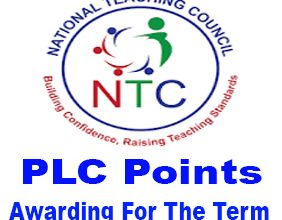

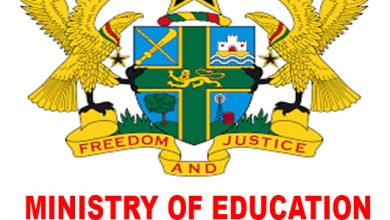
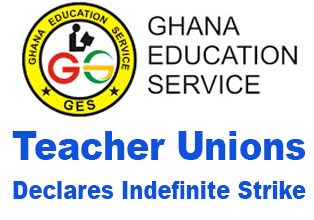
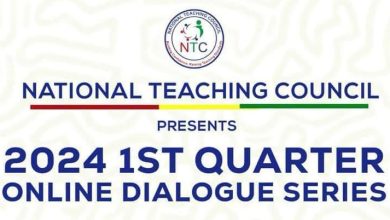
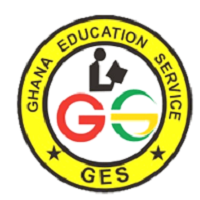
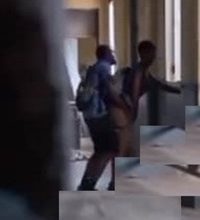
One Comment